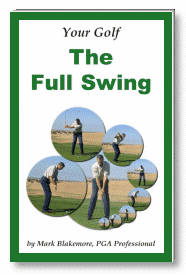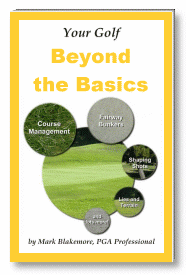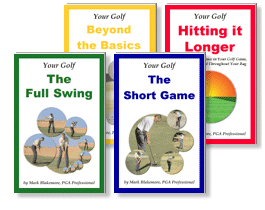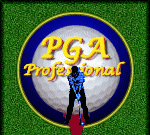Golf Instruction Article |
|||||
A Serviceable or Functional Long Game
|
 |
Let's define unacceptable misses as shots that cost you at least one additional shot, resulting from execution error (not bad shots that result from decision error or mental error). For example, if you hit an approach shot so fat that you still have to hit another approach shot that will cost you another shot in most cases, and if you hit the ball into somebody's backyard that will certainly cost you one or more, etc.
Let's define good shots as shots that, at your present skill level, seem to you to be well-executed and approximately what you had intended or envisioned (not lucky results). E.g., if you skull your tee shot on a par 3 and it goes in the hole for an ace that is not a good shot. That is absurd good luck, though probably fun. It has nothing to do with adequate execution or a good shot.
Of course, your mechanical fundamentals need to be as good as possible in order to minimize your number of unacceptable misses. Improving your mechanical fundamentals will improve the quality of ball contact, distance control and directional control. The improvement of your technique does not happen overnight; it happens as the result of getting input (lessons, reading, etc.) and experience (practicing and playing).
 |
In addition to developing your technique you'll also need to develop your decision-making ability (decreasing the number of strokes you cost yourself with bonehead choices: e.g., "I know I could have cleared that water had I just hit my 3 wood perfectly."). Developing in this area is the result of time and experience (making mistakes, having successes, reading, observing the actions of better players, etc.).
Now, when you consider how things will start to shape up when you add the superior short game (putting in particular) that you'll have been developing after my last article to the serviceable long game and improved decision-making ability you'll be consciously working on after this article you might have something to get excited about, like lower average scores, right? Yes, I know it is a long term project but how else could it possibly happen?**
So if you are interested in having a serviceable or functional long game get started by developing your full swing technique on an ongoing basis: first in terms of the quality of the contact that you make with the ball, then in terms of directional control. That will lead you eventually to more refined control of distances, trajectories, shot shapes, etc., and ever increasing feel. The more you understand your own swing the more you will be able to self-correct, at least to a fairly high degree, when things start going wrong on the course.
All this can only be done by learning and practicing, long term.
To track your improvement in the area of your long game or full swing start keeping track of the number of your unacceptable misses and good shots. Also start keeping track of things like greens in regulation (or greens in one MORE than regulation, if that is more appropriate to your skill level) and fairways hit.
Track all your stats online and get a USGA handicap without being a member of a golf club.
* By practice I mean working on swing fundamentals with many successive repetitions in a non-playing setting, like taking practice swings, working in front of a mirror, using the driving range, etc.; I do NOT mean playing rounds of golf. Playing does not count as practice until your skill level has reached a fairly high level.
** A secret new piece of equipment perhaps, or maybe a previously undiscovered "secret move" that so-and-so used with miraculous success in the late 1890's that can now be yours for just 3 easy payments of...
![]()
 |
 |
It is generally the case that in order to improve in any area of the game you'll need the feedback of an experienced and reputable professional golf instructor. If you anticipate traveling to the bay area of San Francisco in Northern California, contact me to set up a Private Golf School or a golf lesson.
If coming to work with me in person is not possible get my books.
Related Content
Golf Instruction (in-person) - Private Golf SchoolGolf Book - The Full Swing
Golf e-Book - The Simple Swing
Practicing at Home
Golf Tips - Irons
Golf Tips - Woods
Golf Instruction Articles on the swing - various
Ask the Pro - Long Game Questions and Answers
Feel free to send me a message to suggest a topic for future articles.
